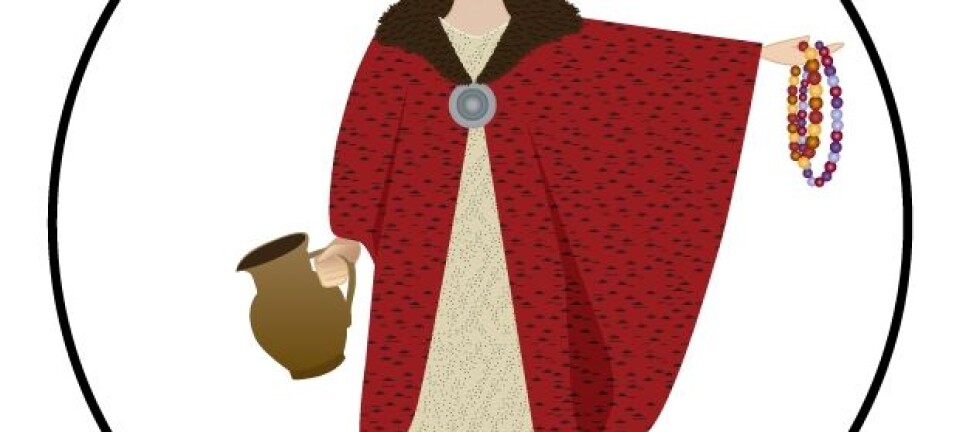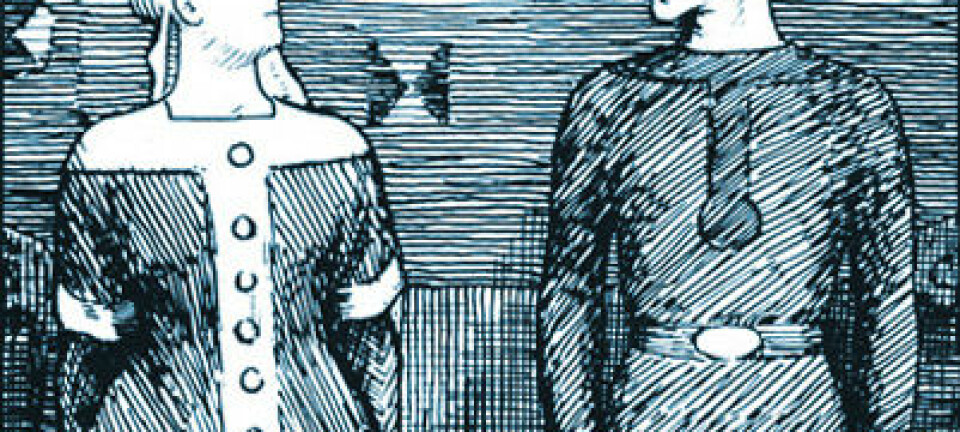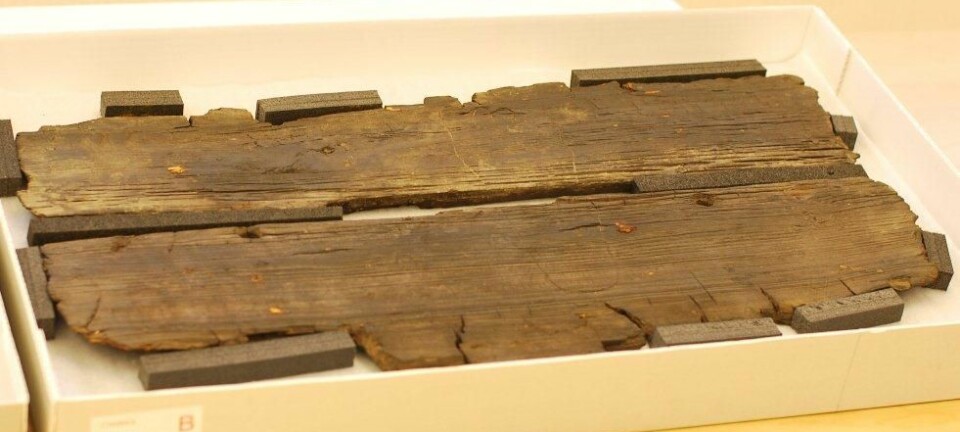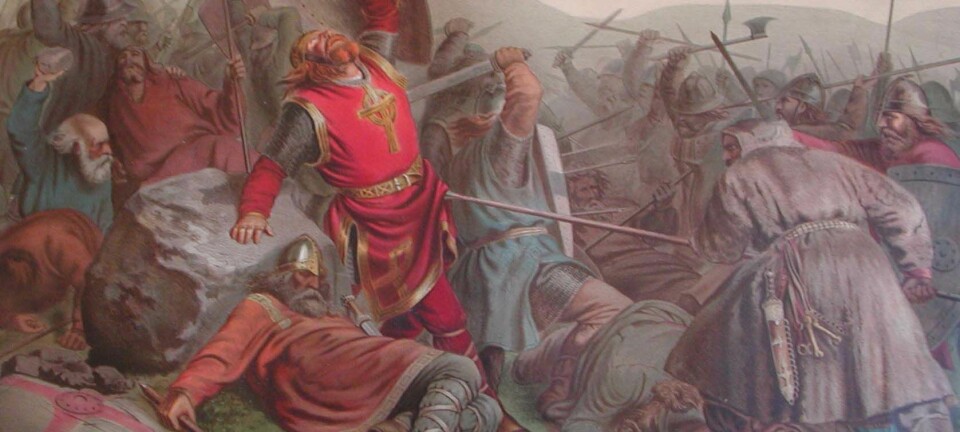An article from Norwegian SciTech News at NTNU
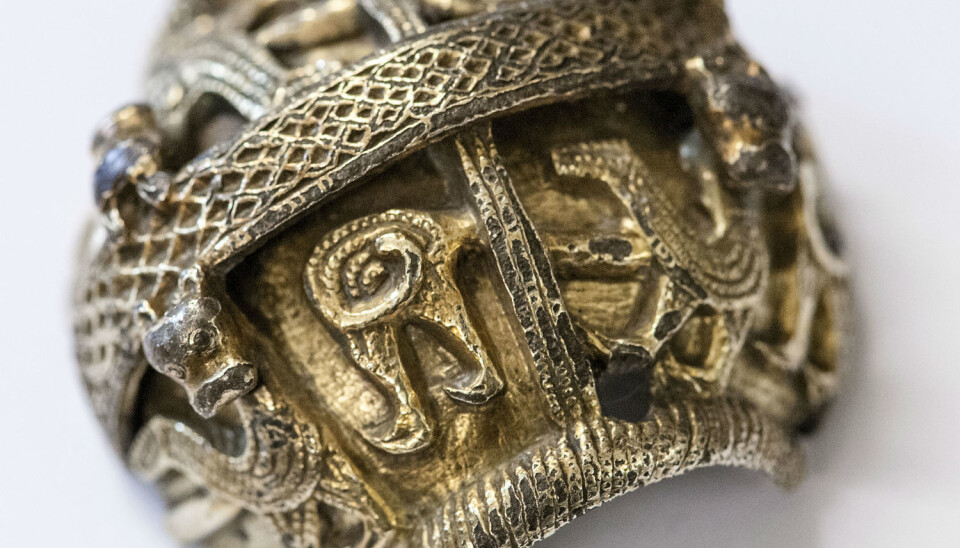
Viking raid may have saved British artefact
A gold object was stolen by Vikings and later buried with its new owner in Norway. That twist of fate probably saved a part of one of the oldest known British croziers.
Denne artikkelen er over ti år gammel og kan inneholde utdatert informasjon.
Griffin Murray, an Irish archaeologist, visited the University Museum of the Norwegian University of Science and Technology (NTNU), Norway, last year. He then took a closer look at the museum’s grave finds.
His visit resulted in new information about the find that is now known to be part of a crozier from northern England – what it looked like and how the Vikings might have plundered it.
“This bit has been part of the decoration in the middle of a staff, or a crozier, from the late 700s, or the beginning of the 800s," says Murray
"It has probably come from the north of England, and not Ireland as we first thought. The decoration doesn’t look Irish.”
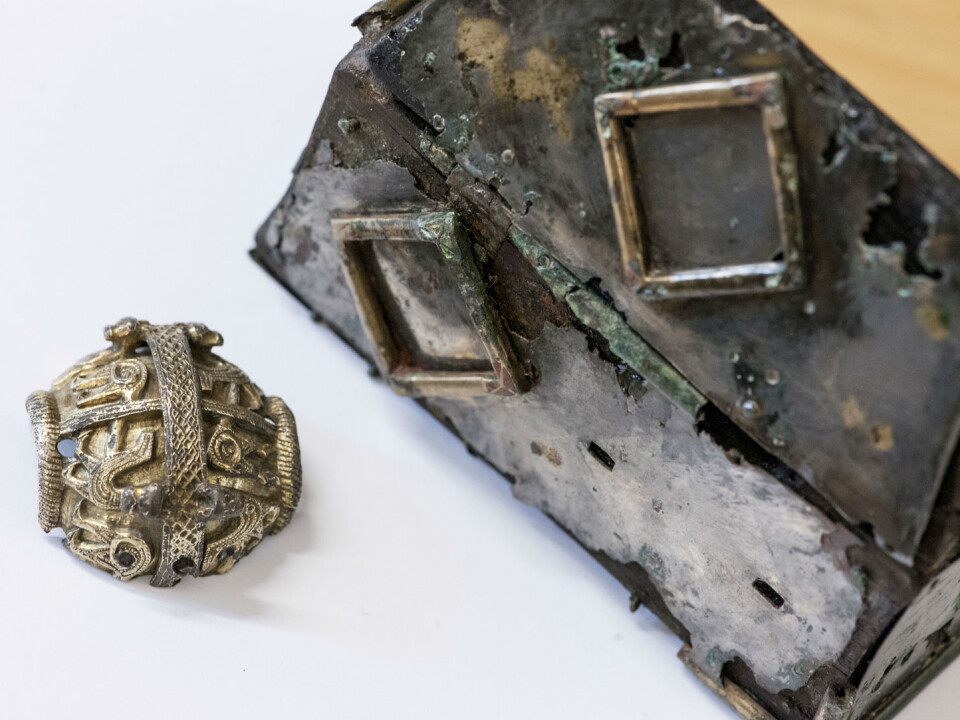
The object was exhumed in 1961 from a Viking grave in Romsdal, central Norway.
One of the oldest
The Irish researcher is involved in an intensive research project on Irish archaeological treasures. He has studied several fragments of ancient Irish and English croziers and thinks the NTNU University Museum’s find is important in understanding how croziers looked during the earliest periods.
He believes the most striking aspect of the gold object is the era it comes from.
“This is the oldest known English fragment, and the only one that dates from before 1000 BCE, ”Murray says.

“If the Norwegian Vikings had not stolen it, it would most probably have been lost,” he states.
Genuine Viking plunder
Jon Anders Risvaag, who is responsible for the museum’s archaeological collections, says it was rewarding to be visited by the Irish researcher.
“Murray is one of the foremost experts in the field, and he provided us with new and exciting information about the Viking finds that are important to share,” he comments.
Risvaag is very interested in determining just where the University Museum’s archaeological finds come from, and whether or not they are from a real Viking raid.
“This find tells us that the Vikings sailed to the British Isles with swords and axes in their hands and stole croziers and other items,” he says.
From bad to good
Risvaag also believes that the Viking raid may have saved the part of the crozier, noting that most of the croziers that remained in the British Isles were melted down for other uses.
“In Norway and other Scandinavian countries, these artefacts were buried as grave goods, which is why the finest objects are usually found in gravesites,” he says.
“This tradition now appears to have saved one of the oldest croziers we know of today.”
Easy targets
The earliest raids on churches took place from just before the year 800, and continued throughout the ninth century at an intense level, according to Murray. He believes that the Vikings chose churches as their goal, not only because they contained riches, but also because they were defenceless and unarmed.
“When Norwegian Vikings sailed to Ireland and the British Isles, their goal was to steal the most valuable stuff. Monasteries and churches were obvious, easy targets, especially because the Vikings were heathens and had no religious convictions or relationship to the bishopric,” says Murray.
Worn as jewellery
Because Norway did not have bishops or Christianity in the 800s, the stolen religious objects were used in ways that were radically different from their original intended use.
“This piece of crozier was cut in half and used as adornment. We only have half of it, so we do not know how the other half was used,” says Risvaag.
“This bit has probably been used as a kind of decoration on a dress, or as jewellery worn by a wealthy woman,” he adds.
A rich Viking woman’s grave
Archaeologists also found a number of fine objects in the same burial mound in Romsdal, in addition to the bit of gold from the crozier. The grave contained a weight, coins and beads as well as a reliquary, which Risvaag believed belonged to a rich woman.
A reliquary is a container for relics from a Christian saint, or for objects that are connected in some way with Jesus. Reliquaries were often shaped like a building, preferably a church, and were covered with gems, precious metals and enamel.
“This is a fine box in solid wood covered with tin. Most likely there would have been several decorations on the reliquary that have broken off, but the container remains a fine precious artefact from an estate with high status in western Norway. A wealthy Viking woman of high status was probably buried in this grave and was given the reliquary and the bit of gold from the crozier as a gift from a Viking raid to the UK,” Risvaag says.
Belong to Norway
Irish newspapers followed up on Murray’s research, and raised the question of whether or not Ireland can ask to have the objects repatriated.
Risvaag says this is unlikely.
“These objects have lain in the soil since the Viking Age. Everything that is excavated today that is older than the Reformation in 1537 is the property of the State. If the material had been illegally brought into Norway today, it would have to be returned to the country it originally came from,” he explains.








